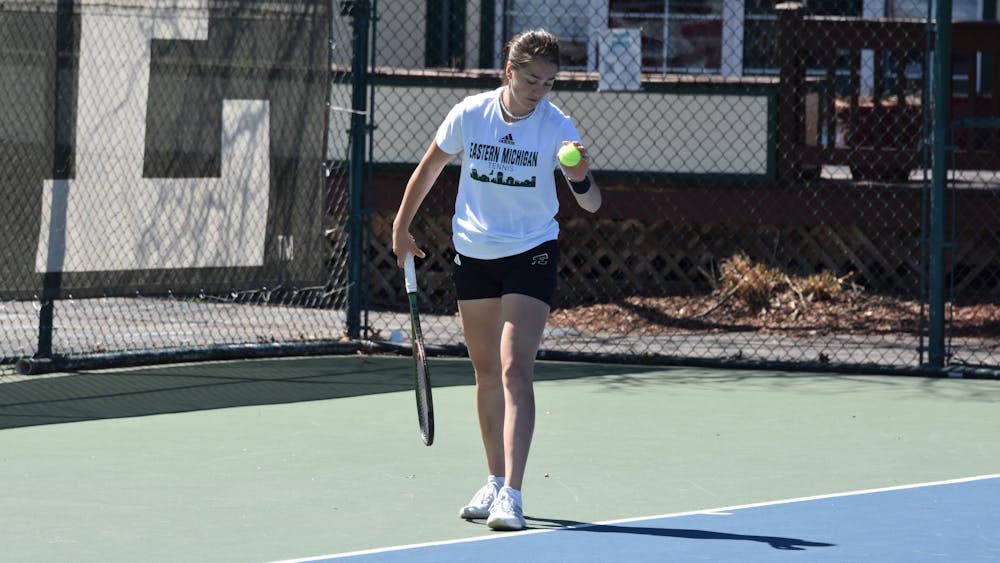Nature, literature and history are what visitors to Ypsilanti’s District Library can expect when they enter into the story and art of landscape painter, Thomas Cole. In the library’s newest exhibit, Wild Lands: The Birth of American Landscape Painting, is currently on display until May 25.
An On the Road project from the National Endowment for the Humanities’ $21.1 million initiative, The Common Good: The Humanities in the Public Square, the exhibit was funded and awarded to the Ypsilanti Library to demonstrate the humanities in civic life. The Ypsilanti Library was one of eight Michigan organizations to receive the grant for 2016.
The NEH also funded the library with related programming such as painting classes and acrylic art classes, workshops, and land conservation-themed workshops.
The Ypsilanti Library puts on major exhibits like Wild Land each year.
"One of the great things about bringing art exhibits like this to the library is that people are coming to the library already so you don't have to go out of your way to go to an art museum or to go somewhere else," said Communication and Development Coordinator of the Ypsilanti Library, Gillian Ream Gainsley. "There's not enough value in putting art in public places and places you already are because you weren't expecting to go to an art museum today and learn something about a topic you wouldn't have known and that is the whole point of libraries. You could learn anything. You come here to learn and also come across something else that is interesting."
Thomas Cole was an English immigrant and artist who moved to America with his family in the early 19th century. He began landscape painting after moving to the Midwest frontier and being introduced to American scenery. He inspired a school of landscape painters after his success in the art of depicting American as well as European landscapes.
"When you think about a painting you think of 'I'm going to see a painting of trees and rivers' and you think of Bob Ross," said Gainsley. "The idea was that people never painted that before Thomas Cole came along. It was either pictures of people or settlements but not the wilderness. He transformed our ideas of the wilderness which spurred the conservation movement."
Organized by the Thomas Cole National Historic Site, the exhibit features different sections of the life of Thomas Cole such as his birth, voyage to America, and his time in the studio, and his legacy of the landscape art movement, Hudson River School.
It also includes a replica of the artist’s studio as well as prints of his work and hands-on interactive stations to draw and paint for creativity.
Featured stations on display was a board game that could be played by visitors in which you are "walking in the woods" and a drawing station to sketch rocks and shells.
Nature sounds were also used to immerse visitors in the wilderness that represented Thomas Cole's paintings.
"Visitors can expect to be reminded of nature, art, and poetry, said Gallery Director, Stacey Palazzolo."We get caught up in our day -to -day life and it's easy to forget about what happened in America and coming into museum setting to do that it takes you to a place you don’t know much about."
"It definitely inspires. Just taking five minutes to draw, write, or do something artistic and as somebody who wants do that on a regular basis it just feels so good and it is therapeutic," said Palazzolo.
In setting up the exhibit it took a total of about 12 hours and the work of six people. In her first time as a gallery director, Palazzolo describes her experience as fun and a bit difficult.
"There's more to putting together an exhibit than I ever realized," she said. "There are people who bring history together and find pieces and build the exhibit. It was a big puzzle piece. I always wanted to do it but I was never the person to do so."
"It's important to the community," said Palazzolo. "I think the purpose is to give library visitors a chance to experience museum quality and a museum quality experience."
"What people learn about it is an artist they didn't know about, a movement they didn't know about and a time in America they probably didn’t know about. It's about landscape painting as a theme and the focus of nature," she said.








